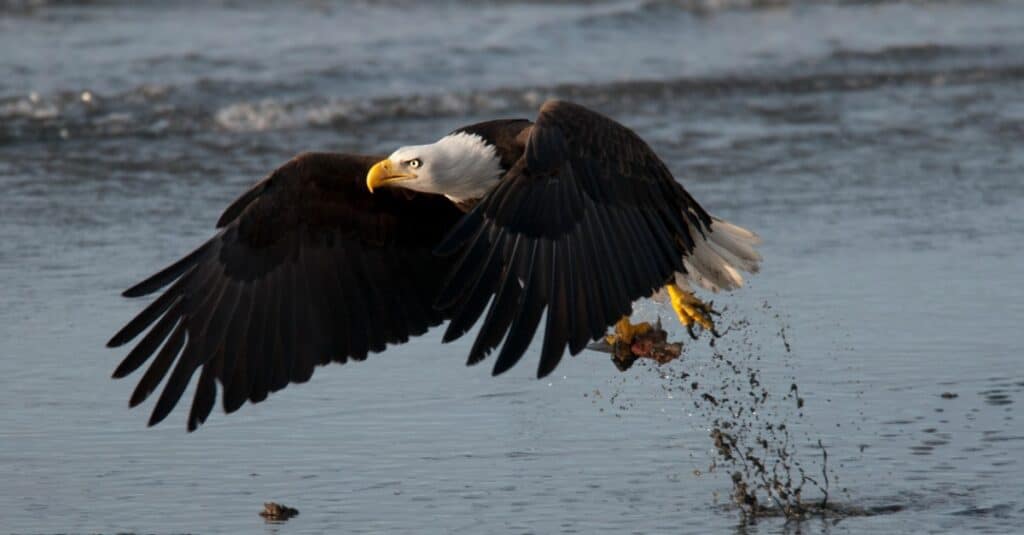New Jersey is a beloved northeastern state in the U.S. Situated between the Atlantic Ocean and the Delaware River, the state offers diverse terrain and is in close proximity to both New York City and Philadelphia. Known for delivering all four distinct seasons, the state has a moderate climate with warm, humid summers and cold, sometimes snowy winters. Read on to learn about the absolute hottest place in New Jersey — including its history, ecology, and wildlife.
The Hottest Place in New Jersey
Moorestown is the hottest place in New Jersey, with the average summer maximum temperature being 87.2 degrees Fahrenheit. For an average of 37 days per year, New Jersey’s temperature rises above 90 degrees Fahrenheit. The state’s average high temperature during peak July is 85 degrees Fahrenheit.
Moorestown, New Jersey, is located in southwest Burlington County in South Jersey. The town is an eastern suburb of Philadelphia (10 miles east of Philadelphia) and has a humid subtropical climate, while towns in North Jersey have more of a humid continental climate.
The Hottest Temperature Ever Recorded in New Jersey
The hottest temperature ever recorded in New Jersey was 110 degrees Fahrenheit in July of 1936. This occurred in Runyon, New Jersey — a city in Middlesex County.
Statewide, average New Jersey temperatures range between 26 degrees Fahrenheit to 86 degrees Fahrenheit throughout the year. Occasionally, temperatures drop below 12 degrees Fahrenheit and rise above 94 degrees Fahrenheit. New Jersey is known for its gorgeous beaches, expansive boardwalks, rich nature, and proximity to two major U.S. cities: New York City and Philadelphia. The state also boasts all four distinct seasons of winter, spring, summer, and autumn.

Some of New Jersey’s most popular attractions are its beaches and boardwalks, which are home to many types of wildlife.
©FotosForTheFuture/Shutterstock.com
The History of Moorestown
Moorestown — not to be confused with Morristown, a town in North Jersey — had property owners in its region as early as 1680. However, at that time, the township was formerly known as Chester Township. Moorestown was officially founded in 1682 and was named after Thomas Moore, the town’s first tavern keeper, and first realtor.
Today, the town is 15.1 square miles and has a population of 21,355. The town offers locals a suburban feel, and most of its residents are homeowners. Fit with malls, parks, natural resource areas, and amusement parks, the town offers attractions for everyone.
Where is Moorestown Located on a Map?
Moorestown is located in the southwest portion of New Jersey, in Burlington County. It is only 10 miles east of Philadelphia, Pennsylvania. It can be accessed from multiple roadways, some of which are the New Jersey Turnpike, Exit 4, and Interstate 295. It is near the towns of Cherry Hill, Maple Shade, and Cinnaminson.
Ecology and Wildlife in Moorestown
Moorestown, New Jersey, offers many outdoor exploration opportunities, like birdwatching and wildlife viewing. In particular, the town is home to Boundary Creek Natural Resource Area, a 34-acre park of upland and lowland forests, fields, tidal wetlands, and the Rancocas Creek. This area provides solace for all types of wildlife and offers visitors bird and wildlife observation, boardwalks, and hiking trails.
Moorestown is mostly made up of wooden wetlands and upland forests. Additionally, it features herbaceous wetlands, scrub wetlands, streams, creeks, shrublands, and tidal marshes. Throughout Moorestown and its different terrains, you can find various types of turtle species like snapping turtles, red-bellied turtles, and Eastern painted turtles, as well as different bird species like Savannah sparrow, great blue heron, bald eagles, and wood thrush.

You can catch the bald eagle while bird-watching in Moorestown.
©iStock.com/Genfirstlight
The town is also rich with invertebrates like beetles, butterflies, moths, dragonflies, bees, and wasps; arachnids like spiders, ticks, and mites; crustaceans like crayfish, and microscopic copepods; mollusks like mussels, clams, and snails; and worms.
New Jersey itself is home to 90 mammal species. The most common mammals in Moorestown include opossums, Eastern moles, bats, Eastern cottontails, chipmunks, squirrels, white-footed mice, meadow voles, muskrats, pine voles, foxes, raccoons, skunks, river otters, beavers, and white-tailed deer.
Birds are also abundant throughout the relatively small state, boasting between 350 and 500 species. As stated above, many people flock (pun intended) to Moorestown for bird-watching opportunities. Some of the most common bird species in the town include Canadian geese, wintering mallards, and American black ducks, among many others.
Additionally, Moorestown is a great place to fish, as it features over 30 fish species in its streams and lakes.
Things to Do in Moorestown
As mentioned, Moorestown is a great place to visit if you’re looking for outdoor activities like bird watching, hiking, fishing, or wildlife observing. One of the town’s most popular attractions is the Boundary Creek Natural Resource Area, which is filled with countless diverse species. You can also visit the town’s multiple parks and memorial fields.
For indoor experiences, check out Moorestown’s mall, amusement park, art center, rock climbing gym, and many dining attractions.
Thank you for reading! Have some feedback for us? Contact the AZ Animals editorial team.








